Combined Therapy: The Best of Both Worlds
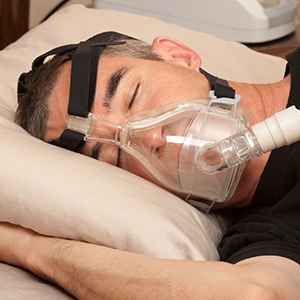 Sleep apnea, like many other health problems, has no one-size-fits all solution. It doesn’t affect patients in the same manner, so therefore the solutions won’t be the same from patient to patient either. Many are able to find complete relief with either CPAP therapy or oral appliance therapy, but these two methods alone are sometimes not enough to solve some patient’s sleep issues entirely. In that case, a third treatment, known as combined therapy, can be used to ensure a patient is able to sleep peacefully through the night. What is it and how does it work? Read on to find out if it could be right for you.
Sleep apnea, like many other health problems, has no one-size-fits all solution. It doesn’t affect patients in the same manner, so therefore the solutions won’t be the same from patient to patient either. Many are able to find complete relief with either CPAP therapy or oral appliance therapy, but these two methods alone are sometimes not enough to solve some patient’s sleep issues entirely. In that case, a third treatment, known as combined therapy, can be used to ensure a patient is able to sleep peacefully through the night. What is it and how does it work? Read on to find out if it could be right for you.
How CPAP Therapy Works
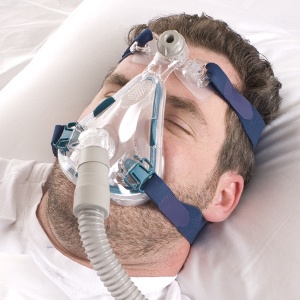
CPAP therapy is the most popular treatment for sleep apnea, and it stands for continuous positive airway pressure. It works by having a patient wear a facemask to bed that is connected to an air pump which forces oxygen into the throat in order to be keep it unobstructed. While it is typically effective, many patients find it extremely uncomfortable.
The facemask itself can bring on feelings of constriction or even claustrophobia. Also, the machine can generate quite a bit of noise at the higher settings, which cannot only disturb a patient, but their bed partner as well. The machine is also quite bulky, which can make a patient feel restrained while they are trying to fall asleep and makes it virtually impossible to travel with.
All of these issues is while, according to numerous studies, about 50% of all people prescribed to use a CPAP stop within the first year.
How Oral Appliance Therapy Works
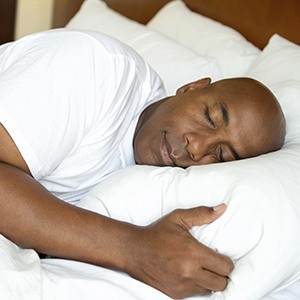
Oral appliance therapy, on the other hand, can often help patients who have difficulties with their CPAP by providing a solution that is light, silent, and easily portable. With oral appliance therapy, all a patient has to do is wear a small, custom-made mouthpiece to bed that gently shifts the jaw forward, and this prevents the airway from becoming blocked during the night.
While this approach is much more comfortable, it can typically only be used to help patients with mild to moderate sleep apnea, meaning it is not a viable treatment on its own.
How Combined Therapy Works
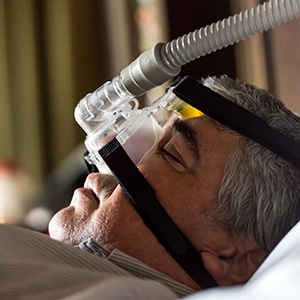
This solution combines the two previous ones we outline. A patient wears an oral appliance and a small nasal mask that is connect to a CPAP machine. This solution is not only helpful for patients who can’t find relief with either treatment on their own, but it can also lessen the issues many have with their CPAP.
While wearing an oral appliance, a patient only needs to wear a small nasal mask and can put the machine on a much lower setting. This reduces both the discomfort and noise that the machine can create, making it easier for a person sleep and consistently use their treatment.
The Benefits of Combined Therapy
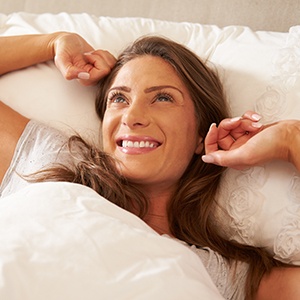
Combined therapy has a number of benefits for sleep apnea patients who can’t find relief with either a CPAP machine or oral appliance therapy alone:
- Increased Comfort:As we mentioned above, with combined therapy, a patient only has to wear a small nasal mask with their CPAP as opposed to a complete facial one. Also, thanks to the assistance provided by an oral appliance, they can also put the CPAP on a much lower setting, reducing the noise and amount of air that is being forced into the throat.
- Easier to Use:One of the biggest hurdles when it comes to treating sleep apnea is patient compliance. In short, if the treatment isn’t comfortable or easy to use, a patient will simply stop overtime, exposing themselves to the dangers of sleep apnea. Because combined therapy mitigates many of the common problems associated with CPAP therapy, a patient is much more likely to use it consistently over time and protect themselves from the side effects of sleep apnea, drastically improving their health.
- More Effective: In a study conducted by the American Academy of Dental Sleep Medicine, combined therapy was shown to decrease the number of apnea events (where a patient temporary stops breathing) a person experienced during the night more than just standard CPAP therapy. Completely untreated, a patient suffered about 6 apnea events an hour, and with CPAP therapy, that number was reduced to around 4. However, combined therapy was able to reduce it further to 2, showing how this method is one of the most effective approaches to treating sleep apnea.
- Increased Convenience: A common problem for CPAP users is that the machine is nearly impossible to travel with, so when most go on the road, they simply leave it at home. With combined therapy, a patient can at least take their oral appliance with them so they never have to go a night without some form of treatment.
Is Combined Therapy Right For Me?

When you visit Sleep Better Appliances, Dr. James Striebel will go over all of your treatment options with you. Combined therapy is typically recommended for those patients who have issues with their CPAP but can’t get complete relief with oral appliance therapy alone. Nonetheless, Dr. Striebel will work with your sleep doctor to find the customized solution that is best for you, whether that be combined therapy or not.
Contact Our Huber Heights Sleep Apnea Team Today
If you’re ready to sleep through the night again, wake up in morning full of energy, and not feel fatigued during the day, please contact Sleep Better Appliances for a consultation. Before you do that, we recommend that you take our short STOP-BANG assessment which will give us essential information as to your risk of developing sleep apnea. Once you’ve completed it, our team will contact you within 24 hours to schedule an appointment.
At Sleep Better Appliances, we’re able to walk you through the entire process of finding the solution to your sleep issues, from diagnosis all the way to treatment. Everyone deserves a good night’s rest at the end of the day, and if you can’t remember the last time you had one, please contact us today.
More to Explore
What is Sleep Apnea? Oral Appliance Therapy Types of Oral Appliances What We Do



